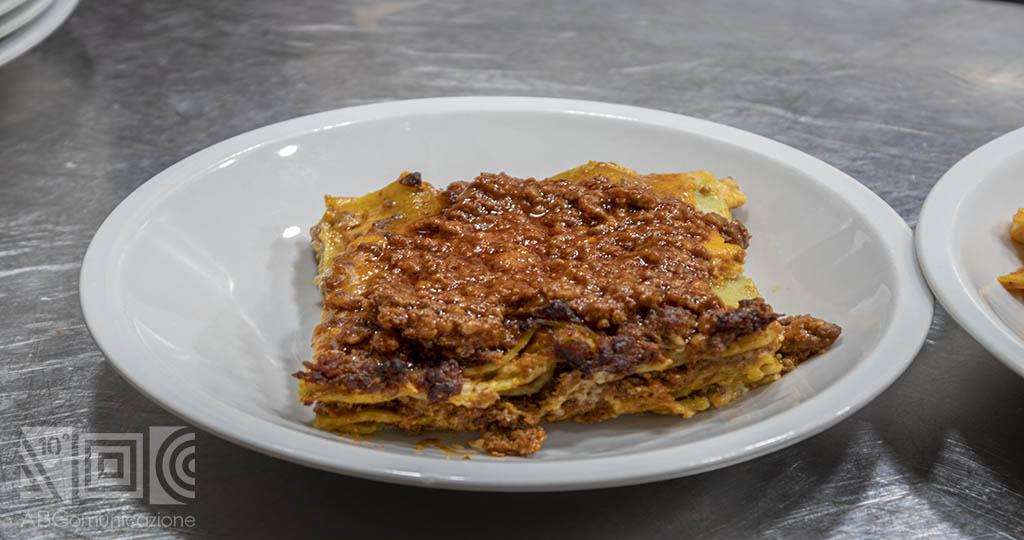Bologna has always been called la Dotta, la Grassa, la Rossa (“the Erudite, the Fat, the Red”). The former attribute derives from the presence of the University of Bologna; the second from its long culinary tradition; the latter is due to the color of the bricks of the buildings.
Do you want to find out which are the five best typical taverns in Bologna? Keep reading!
Trattoria da Vito
Trattoria da Vito is one of the typical taverns of Bologna: it is located in St. Mario Musolesi 9, in the Cirenaica district, more precisely in the San Donato district.

This trattoria was born in about 1947 when Vito, the owner, decided to buy it from a relative. At first it was a small restaurant, with a reduced menu, prepared by Vito’s wife. Over time, it began to grow, attracting more and more people thanks to its strategic position: in the surroundings there were many shops, but also many railway workers who met there.
Success came when, in the seventies, the Democrazia Cristiana created the Foglio: a newspaper in opposition to Avvenire which, however, did not have success. The Foglio’s journalists were customers of the restaurant which, over time, became a reference point for the latter. This is how more and more people started going to Trattoria da Vito: many celebrities as well.
Trattoria da Vito has always been a symbol of Bologna, even after the death of its founder, thanks to his son Paolo who continues the tradition. In this tavern, in the eighties and nineties, regular guests were illustrious personalities who marked the history of Bologna, such as Lucio Dalla, Guccini and Gaber. They met to play, spend evenings full of good food, music and fun.

If you are curious and want to know more about Bologna’s music tradition, read our article Bologna: City of Music.
Up to now, the Trattoria da Vito maintains all the tradition established by Vito, without changing the menu, but not even the aesthetic aspect: upon entering you can still see the long green curtains.
Osteria dell’Orsa
The Osteria dell’Orsa was founded in 1979 in St. Mentana 1, in the historic center of Bologna. Its foundation is due to Maurizio Sure who, with his brother Giuseppe and his friend Franco Bertocchi. The three took over the management of the former “Dal Francese” sandwich shop to make it the current Osteria dell’Orsa.

It is considered one of the typical taverns of Bologna: thanks to the Marxist thought of the owners, the tavern immediately became a meeting place for communists and punks. What not everyone knows is that this restaurant has a basement where, for many years, there were numerous concerts: it started with punk and then moved on to jazz. In 2002, with the murder of Marco Biagi, a labor lawyer and academic, by the Red Brigades, Maurizio together with his partners decided to focus more on catering, abandoning musical evenings.
Did you know that St. Mentana is in the ancient jewish ghetto of Bologna? It is a place rich of memory and history, that has to be seen. Morever, near to the Osteria dell’Orsa there are the Two Towers: one of the symbols of the city. See their story in our article!

But why is it called Osteria dell’Orsa?
The name derives from a book by Toni Negri, a philosopher, political scientist, activist adhering to worker Marxism, which Maurizio read before opening the restaurant. In this book, the author compares the movement of the seventies to a female bear (in italian “orsa”), that is a meek animal that becomes ferocious to defend the little ones.
To deepen this topic, we sugget to visit the Biblioteca Salaborsa: a place that knew many transformations and functions over time. Now, it is the most important Library of the city, and many students go there. Furthermore, it is right in front of one of the symbols of the city: the Neptune fountain. Its history hides one of the Seven Secrets of Bologna, discover it in the article!
Trattoria da Me
Trattoria da Me was born in 1937. However, its story begins even earlier, when two siblings, Danio and Nina, moved from San Giovanni in Persiceto to Bologna. Nina, together with her husband Orazio, opened a little tavern with a very small menu. In the meantime, Danio, who worked in the factory at Ducati, meet and married Ada: among her many talents, she also knew how to make pasta. So, Danio left his job in the factory and, with his wife they reached Nina, opened the Trattoria da Danio.

Did oyu know that the women that make fresh pasta have always been called sfogline? They prepared pasta for their families, since it is made by the only two ingredients that everybody could afford: flour and eggs. For further information and curiosities like this one, see our article Fresh pasta: the art of bolognese grannies.
The management of this small restaurant ended in 1990, when Danio retired and the restaurant was bought by a new owner. In 2014, however, it was definitely closed.
Only in 2016 thanks to Elisa, nephew of Danio and Ada, the restaurant reopened under the name of Trattoria da Me. And it is also thanks to her that the restaurant won in 2018 the “Best Bolognese cutlet” award assigned by the association “Friends of the Petroniana”.
Trattoria da Me is in St. San Felice 50, a few steps away from the homonymous Door, that still now is part of the city walls. If you want to discover some interesting curiosities, read also A Journey to Discover the Walls of Bologna.

Osteria De’ Poeti
The Osteria De’ Poeti owes its name to the street in which it is located: St. de’ Poeti, in particular at civic 1/b. This tavern was born in the 15h century Sampieri Cospi palace, but its history began only in the 17th century.
Initially, inside the building there was only a small room below street level, where the wine was bottled and sold: it was called L’hustari dri dal Ren, which is dialect for “a tavern behind the Rhine river”.
In about 1960, the tavern changed its name to Osteria De’ Poeti: there were many famous people who frequented the environment, such as Giosuè Carducci, Olindo Guerrini and Giovanni Pascoli in the 19th century and Francesco Guccini and Lucio Dalla in the 20th century.
Even today it is possible to admire the vaulted brick ceilings, the cellars, the counter for sale to the public imposed by the papacy in the 17th century, the 15th century fireplace and the spring well.
After an exquisit meal you do not know what to do? You are lucky, a few minutes away from the tavern there is the Basilica of Santo Stefano, also called Complex of the Seven Churches: see the reason for this in our article. If you are wondering what is the difference between Basilica, Duomo and Cathedral, we explain it in the article about the Basilica of San Petronio.
Osteria del Sole
Another of the typical taverns of Bologna is the Osteria del Sole. It has a centuries-old tradition behind: in 1465 it opened in Vicolo Ranocchi, between St. Orefici and Pescherie Vecchie. The Osteria del Sole is located in the Quadrilatero district, an area famous for its ability to satisfy any culinary requirement.
Its history sees numerous important families of the time as owners, such as Count Marcantonio Ranuzzi. In 1940 it was Debora Donini who took over the business, in partnership with Luciano Spolaore’s father. It will be this family to manage the entire business until today.

There are two curiosities concerning the Osteria del Sole: the first is that it is the oldest tavern in Bologna and the second oldest in Italy. Secondly, it is the only tavern that serves only wine, without food. If you want to eat, you can buy the meal in one of the many shops aorund and bring it to the tavern.
What are you waiting for? Try one of the typical taverns of Bologna!
Bologna is a city full of historical buildings and, among these, we want to point out the Cathedral of San Pietro. A curiosity regarding it is that it has a bell tower with one of the biggest bells that can be played in the bolognese way. It is an intriguing term that is linked to the city’s tradition: read the article The Metropolitan Cathedral of San Pietro to discover what this expression means! Otherwise, if you prefere staying outdoors, the Orto Botanico is for sure what you are looking for! It is one of the oldest gardens in Europe, it is rich of vegetation and paths, also for children, and it is located in a strategic position! Last but not least, for those who love walks, you can follow the longest portico of the world that will lead you to the Sanctuary of the Madonna of San Luca: an historical church with a breathtaking view!
Bibliography
- Bassini M., NosterChef. La buona cucina in 101 ristoranti e trattorie di Bologna e provincia, Bologna, Minerva Edizioni, 2016.
- Bassini M., Qui era tutta lasagna. Volti e storie di ristoranti nella Bologna di ieri e di oggi, Bologna Minerva Edizioni, 2020.
- Molinari Pradelli A., Bologna tra storia e osterie. Viaggio nelle tradizioni enogastronomiche petroniane, Bologna, Pendragon, 2007.
- Turri N., Ristoranti, trattorie e osterie di Bologna e provincia, Bologna, Giunti Demetra editore, 1999.




